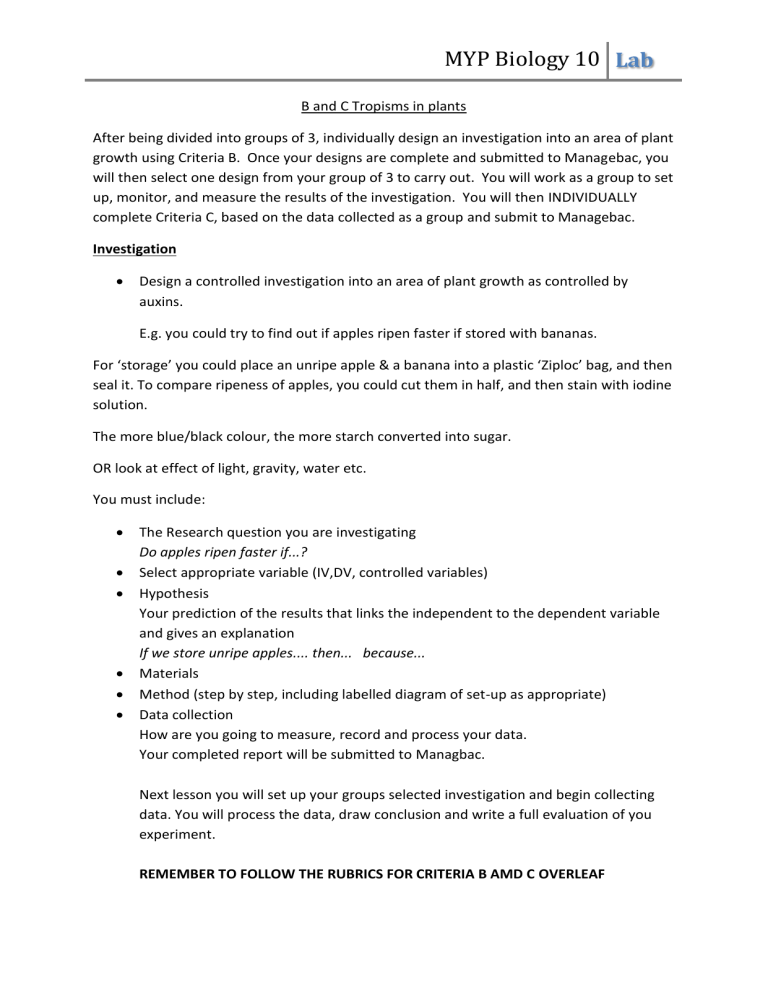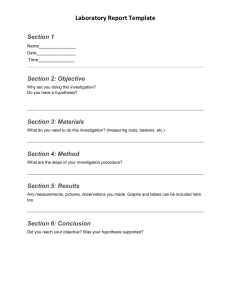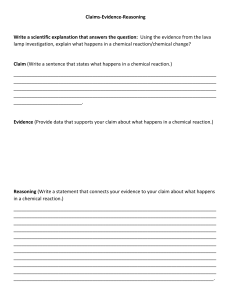
MYP Biology 10 Lab B and C Tropisms in plants After being divided into groups of 3, individually design an investigation into an area of plant growth using Criteria B. Once your designs are complete and submitted to Managebac, you will then select one design from your group of 3 to carry out. You will work as a group to set up, monitor, and measure the results of the investigation. You will then INDIVIDUALLY complete Criteria C, based on the data collected as a group and submit to Managebac. Investigation Design a controlled investigation into an area of plant growth as controlled by auxins. E.g. you could try to find out if apples ripen faster if stored with bananas. For ‘storage’ you could place an unripe apple & a banana into a plastic ‘Ziploc’ bag, and then seal it. To compare ripeness of apples, you could cut them in half, and then stain with iodine solution. The more blue/black colour, the more starch converted into sugar. OR look at effect of light, gravity, water etc. You must include: The Research question you are investigating Do apples ripen faster if...? Select appropriate variable (IV,DV, controlled variables) Hypothesis Your prediction of the results that links the independent to the dependent variable and gives an explanation If we store unripe apples.... then... because... Materials Method (step by step, including labelled diagram of set-up as appropriate) Data collection How are you going to measure, record and process your data. Your completed report will be submitted to Managbac. Next lesson you will set up your groups selected investigation and begin collecting data. You will process the data, draw conclusion and write a full evaluation of you experiment. REMEMBER TO FOLLOW THE RUBRICS FOR CRITERIA B AMD C OVERLEAF MYP Biology 10 Lab Criteria B: 7-8 The student is able to: explain a problem or question to be tested by a scientific investigation I have: given a detailed account of a problem, using the scientific facts and sources, how it is related to the topic, including the all variables. formulated a testable hypothesis providing details about the variables using words like ‘increase, decrease, no change’ and supported it clearly using correct scientific reasoning using ‘because’ formulate and explain a testable hypothesis using correct scientific reasoning explain how to manipulate the variables, and explain how sufficient, relevant data will be collected given a detailed account of how to manipulate, control and measure IV, DV and all controlled variables and collect sufficient relevant data design a logical, complete safe method in which he or she selects appropriate materials and equipment designed a safe, complete and logical method that is easy to follow and contains every material used and include all quantities. Criteria C: 7-8 The student is able to: correctly collect, organize, transform and present data in numerical and/or visual forms I have: correctly organized data using tables including correct titles, headers and units; data has been processed showing worked examples and displayed appropriately using correct labels and units accurately interpret data and explain results using correct scientific reasoning correctly used knowledge and understanding of science to recognise patterns, draw conclusions and correctly given an account of how and why the variables are related evaluate the validity of a hypothesis based on the outcome of a scientific investigation evaluated whether the data supports the hypothesis based on the data collected considering many possibilities and used scientific reasons and sources to explain evaluate the validity of the method based on the outcome of a scientific investigation evaluated the method considering the strengths, limitations and the reliability and addressed the significance explain improvements or extensions to the method that would benefit the scientific investigation provided a detailed account to explain improvements to specific limitations and further work that are realistic and based on scientific reasoning and research




